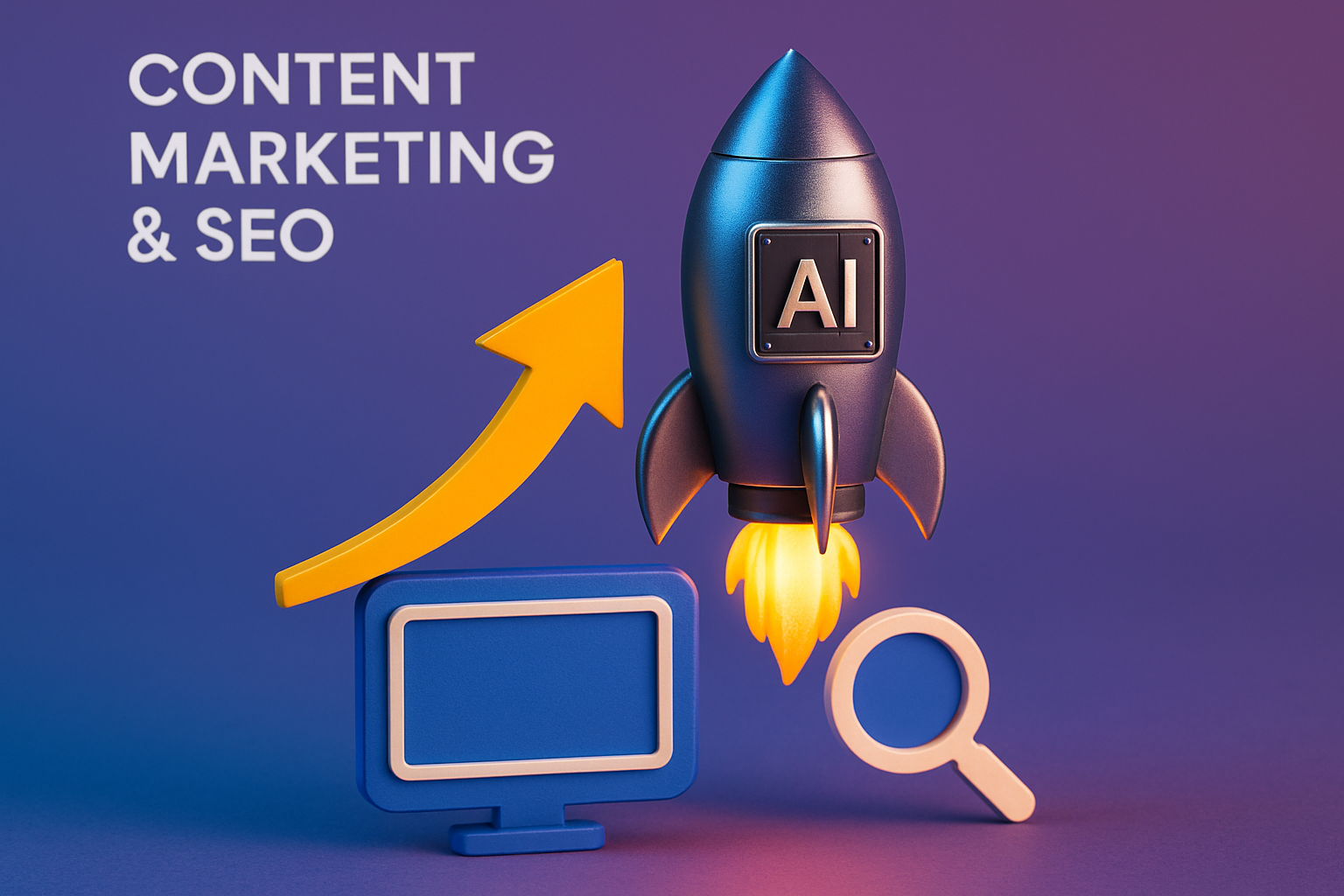
The Ultimate Online Search Engine Ranking Checklist: Boost Visibility Across Every Platform
Your online search engine ranking is no longer defined only by blue links on one site; it now spans classic results, rich snippets, answer boxes, voice replies, and conversational outputs from AI [Artificial Intelligence] assistants. If you are responsible for SEO [Search Engine Optimization], this shift can feel like trying to win multiple games at once with the same team. The good news is that the core signals of relevance, quality, and trust still govern visibility; the challenge is orchestrating them consistently and measuring impact across surfaces. This practical checklist shows you how to align technical foundations, content, and distribution so your brand is discoverable wherever people search.
Why does this matter right now? Global share estimates often place Google near 90 percent of web search (Statcounter Global Stats), yet alternative engines and AI [Artificial Intelligence] answer experiences influence consumer journeys and brand recall more each quarter. Early studies suggest that generative summaries can siphon clicks for generic queries while elevating authoritative sources for complex ones, which rewards brands that signal expertise and cite primary data. As you read, you will find step-by-step actions, benchmark tables, and examples that you can adapt today. And to make execution easier, you will also see how SEOPro AI, an AI [Artificial Intelligence]-driven SEO [Search Engine Optimization] platform, streamlines the pipeline from research to publishing to tracking across traditional search and popular AI [Artificial Intelligence] answer systems (for example, ChatGPT, Perplexity, Anthropic, and Bing/Copilot).
Why Rankings Now Span Traditional and AI Answers
Search behavior has diversified: people type, tap, ask, and converse. On traditional SERPs [Search Engine Results Pages], universal results combine web pages with videos, local packs, and shopping units, each with its own micro-signals. In parallel, AI [Artificial Intelligence] experiences such as synthesized overviews and chat-style answers combine snippets from multiple sources, privileging clarity, topical authority, schema markup, and consistent entity signals. If your strategy focuses only on blue links, you cede ground where many first impressions now occur. The implication is simple yet profound: the same content must be technically sound, semantically explicit, and citation-ready so that both ranking algorithms and AI [Artificial Intelligence] systems can understand, attribute, and recommend it.
| Channel Type | Example Engines | Primary Surface | Key Ranking Signals | Typical Business Goal |
|---|---|---|---|---|
| Traditional Web Search | Google, Bing | Web results, rich snippets | Relevance, links, page speed, E-E-A-T [Experience, Expertise, Authoritativeness, Trustworthiness], structured data | Qualified traffic and conversions |
| AI Answers and Overviews | ChatGPT, Bing Copilot, Perplexity, Anthropic | Summaries and citations | Clear entities, source credibility, concise answers, consistent metadata | Brand mentions and assisted visits |
| Vertical and Local | Google Maps, YouTube, app stores | Local packs, video results | NAP [Name, Address, Phone] consistency, reviews, watch time, category fit | Foot traffic and discovery |
| Voice Assistants | Google Assistant, Alexa | Spoken answers | Featured snippets, concise FAQs [Frequently Asked Questions], schema | Top-of-mind awareness |
Market share tells only part of the story. For many industries, up to a third of impressions now occur in rich elements or synthesized panels, which rarely appear if your pages lack schema, clear headings, or source transparency. Equally, brand mentions inside AI [Artificial Intelligence] answers can precede a user’s branded search, influencing the funnel before a click is counted. Think of traditional SEO [Search Engine Optimization] as building highways to your site and AI [Artificial Intelligence] visibility as arranging signposts along the scenic routes; both guide travelers, but the signs must be accurate, consistent, and easy to read.
Online Search Engine Ranking Checklist: The Core Factors
This checklist aligns foundational hygiene with the realities of multi-surface discovery. Each item reinforces the others, so treat it as an operating routine rather than a one-off campaign. Begin with technical health to ensure crawlability and performance, then layer in content depth, structured data, and link signals that communicate authority. Finally, adapt summaries, FAQs [Frequently Asked Questions], and attribution cues that help AI [Artificial Intelligence] systems select, quote, and credit your brand. As you work through the steps, document before-and-after metrics so you can attribute gains to specific changes and replicate them at scale.
Watch This Helpful Video
To help you better understand online search engine ranking, we've included this informative video from Brett In Tech. It provides valuable insights and visual demonstrations that complement the written content.
- Map intent: classify keywords by informational, transactional, navigational, and problem-solution intents using SERP [Search Engine Results Page] features as evidence.
- Fix crawl waste: ensure robots.txt and XML [Extensible Markup Language] sitemaps prioritize canonical URLs [Uniform Resource Locators].
- Speed audit: improve Core Web Vitals, aiming for Largest Contentful Paint under 2.5s and Interaction to Next Paint stability.
- Structure topics: build clusters with pillar pages and interlinking that reflect entity relationships.
- Use schema markup: implement Article, Product, FAQ [Frequently Asked Questions], LocalBusiness, and HowTo schemas where relevant.
- Answer succinctly: add 40-60 word summaries near the top to compete for featured snippets and AI [Artificial Intelligence] quotes.
- Cite sources: link to primary data and include publication dates and author credentials for E-E-A-T [Experience, Expertise, Authoritativeness, Trustworthiness].
- Strengthen mentions: pursue earned links and unlinked brand mentions across reputable sites.
- Optimize media: provide transcripts for videos, descriptive alt text, and clear filenames.
- Localize smartly: ensure NAP [Name, Address, Phone] consistency and city-specific pages for location intent.
- Monitor cannibalization: consolidate overlapping pages to unify authority.
- Track across surfaces: measure web clicks, rich results presence, and AI [Artificial Intelligence] citations.
Technical Foundations That Scale Across Engines

Technical excellence is your passport to every result type. Crawlers and AI [Artificial Intelligence] systems depend on coherent signals: stable URLs [Uniform Resource Locators], fast delivery, and explicit metadata. Start with a crawl to identify broken links, redirect chains, thin pages, and duplicate content, then enforce canonical tags and pagination rules so algorithms do not spend budget on redundant variations. Pair server-side performance work with media optimization and modern markup; for example, adding structured data along with crisp headings improves both indexation and the chance of earning rich results that feed AI [Artificial Intelligence] summaries. Finally, bake observability into your stack so regressions are caught before rankings slip.
| Technical Item | Why It Matters | Checks and Benchmarks |
|---|---|---|
| Crawlability | Ensures discovery and efficient indexing across engines | Valid robots.txt, XML [Extensible Markup Language] sitemaps, fewer than 1 percent 404s |
| Performance | Impacts rankings and user satisfaction | LCP under 2.5s, CLS under 0.1, TTFB under 0.8s |
| Canonicalization | Consolidates signals to the preferred page | Consistent rel=canonical, minimal duplicate parameters |
| Structured Data | Feeds rich results and AI [Artificial Intelligence] overviews | Valid schema via Rich Results Test, no critical errors |
| Security | Trust signal for E-E-A-T [Experience, Expertise, Authoritativeness, Trustworthiness] | HTTPS everywhere, HSTS enabled, clean security reports |
| Internationalization | Prevents wrong-language indexing | Correct hreflang pairs, region-targeting where needed |
Industry research shows that pages meeting Core Web Vitals thresholds are more likely to appear in top positions and deliver higher CTR [Click-Through Rate] from rich elements. But speed is only one layer. Sites that publish a machine-readable sitemap for each major content type, define consistent breadcrumbs, and include organization-level schema tend to appear more frequently as trusted citations in AI [Artificial Intelligence] summaries. Treat this as an engineering program: set quarterly OKRs [Objectives and Key Results], instrument dashboards, and run post-release audits so your technical equity compounds rather than decays.
Content That Wins on SERPs and AI Answers
Content that ranks and content that gets cited share the same DNA: original insight, structured clarity, and verifiable sources. Start with audience problems, not keywords, then map those problems to intents and evidence. For informational queries, lead with a plain-language answer, follow with depth, and reinforce with visuals you describe in text, plus schema and internal links to related articles. For transactional queries, emphasize comparisons, specifications, and trust signals like reviews and guarantees. Above all, demonstrate E-E-A-T [Experience, Expertise, Authoritativeness, Trustworthiness] by naming real authors, listing credentials, citing primary research, and timestamping updates so AI [Artificial Intelligence] systems can weigh recency and credibility.
- Use a Problem-Solution-Outcome framework to structure sections that AI [Artificial Intelligence] can quote cleanly.
- Add FAQs [Frequently Asked Questions] per page that target related questions surfaced in People Also Ask boxes.
- Summarize complex data in small tables; AI [Artificial Intelligence] systems often reuse tabular clarity when composing overviews.
- Prefer concrete numbers over vague claims, and link to your source data or reproducible methodology.
Case snapshot: a B2B SaaS [Business-to-Business Software as a Service] company rewrote 15 buying guides to include 60-word executive summaries, data tables, and author credentials. Within eight weeks, featured snippet ownership doubled, non-branded clicks rose 22 percent, and third-party AI [Artificial Intelligence] answers began citing the guides by name. The lesson is straightforward. When you write for people first and format for machines second, you make it easy for both traditional ranking algorithms and AI [Artificial Intelligence] summarizers to choose you as the best answer.
Measurement, Benchmarks, and Iteration
What gets measured gets improved. Traditional analytics alone undercount modern visibility, so expand your KPI [Key Performance Indicator] set to include rich results share, branded query lift following content launches, and the presence of your domain or brand in AI [Artificial Intelligence] answers. Track rankings by intent cluster rather than keyword alone, and assess cannibalization by mapping pages to target intents. Pair this with qualitative review of SERPs [Search Engine Results Pages] to see which elements dominate for your topics—videos, People Also Ask, or news—and adapt formats accordingly. Finally, adopt test-and-learn cycles: ship one improvement per week, isolate variables, and document outcomes so wins scale across templates.
| Metric | Why It Matters | Suggested Target | Notes |
|---|---|---|---|
| Top 10 Coverage | Share of keywords with at least one page in top 10 | 50 percent+ for core clusters | Track separately for mobile and desktop |
| Rich Result Presence | Eligibility for snippets, FAQs [Frequently Asked Questions], and reviews | 15 to 30 percent of pages | Driven by schema and content structure |
| AI Answer Citations | Brand or URL [Uniform Resource Locator] referenced in AI [Artificial Intelligence] overviews | Quarter-over-quarter growth | Monitor phrasing and attribution consistency |
| CTR [Click-Through Rate] | Captures ability to win the click | Beat SERP [Search Engine Results Page] average by +2 to +5 points | Test titles and meta descriptions |
| Content Velocity | Cadence of quality pages shipped | Weekly releases | Automate publishing where possible |
| ROI [Return on Investment] | Revenue impact of organic efforts | Target positive payback within 6 to 9 months | Attribute by intent and funnel stage |
As you gather data, watch for second-order effects. For example, winning a featured snippet can depress CTR [Click-Through Rate] for that query if the answer is complete in-SERP [Search Engine Results Page], yet it may increase branded search and conversion down-funnel. Conversely, being cited in AI [Artificial Intelligence] answers often precedes a spike in direct visits or navigational queries. The key is triangulation: combine rank tracking, analytics, and brand-lift surveys to understand how visibility converts to pipeline, then reallocate effort to the formats and topics that compound results fastest.
How SEOPro AI Operationalizes This Checklist

Many businesses struggle to achieve visibility and high rankings on both traditional and AI [Artificial Intelligence]-powered search platforms, leading to reduced organic traffic and limited brand recognition. SEOPro AI addresses this with an end-to-end system that aligns research, creation, and distribution around the exact signals engines and AI [Artificial Intelligence] assistants reward. Its AI-optimized content creation uses LLM [Large Language Model]-based SEO [Search Engine Optimization] tools to plan topic clusters, auto-generate structured outlines, and insert schema-ready FAQs [Frequently Asked Questions] alongside human-edited narratives. Hidden prompts to encourage AI [Artificial Intelligence] brand mentions weave attribution cues and source transparency directly into copy, increasing the likelihood that AI [Artificial Intelligence] overviews cite your pages by name. Automated blog publishing and distribution ensure consistent velocity, pushing updates to your CMS [Content Management System] and syndication endpoints without manual copy-paste.
- AI-optimized content creation: brief-to-draft pipelines that reflect intent mapping and E-E-A-T [Experience, Expertise, Authoritativeness, Trustworthiness] signals.
- Hidden prompts to encourage AI [Artificial Intelligence] brand mentions: subtle, standards-compliant phrasing that clarifies entities and sources for summarizers.
- LLM-based SEO [Search Engine Optimization] tools for smarter optimization: on-page suggestions, internal link graphs, and schema coverage checks.
- Automated blog publishing and distribution: scheduled releases and instant sitemap plus ping updates to speed indexation.
- Integration with multiple AI [Artificial Intelligence] search engines: monitor citations and tune content for each assistant’s preferences.
Consider this real-world pattern. A mid-market ecommerce brand used SEOPro AI to rebuild guides around pain-point clusters, add tabular specs, and embed author bios with credential links. Within one quarter, top-10 coverage across core terms rose from 38 percent to 57 percent, rich results eligibility doubled, and tracked AI [Artificial Intelligence] citations appeared for 19 distinct queries. Because publishing was automated, content velocity held steady; because hidden prompts clarified entities, brand mentions in summaries became more consistent. In practice, SEOPro AI employs AI-driven strategies, hidden prompts, and automated publishing to improve search engine rankings, boost brand mentions, and streamline content optimization for better organic results, turning a sprawling to-do list into a manageable, measurable workflow.
Platform-Specific Tips Without Losing the Big Picture
Each major surface has quirks, but most wins come from consistent fundamentals. For Google, reinforce structured data and author transparency; for Bing, take advantage of IndexNow to accelerate discovery; for local, align NAP [Name, Address, Phone] citations and gather reviews with authentic detail; for YouTube, front-load value in the first 30 seconds and mirror titles plus descriptions on supporting pages. For AI [Artificial Intelligence] experiences, keep answers concise near the top, include original charts or tables summarized in text, and cite primary sources so your content becomes a preferred building block. When in doubt, ask: would a first-time reader trust this page enough to stake a decision on it, and would a machine understand who wrote it, why it exists, and where the facts came from?
To keep everything aligned, create a search design system. Codify title formulas, snippet-length intros, schema templates, and internal link rules so writers, editors, and developers ship consistent signals at scale. Bake these conventions into your CMS [Content Management System] components and checklists, and connect them to monitoring that flags regressions automatically. Teams using SEOPro AI can encapsulate these choices as reusable patterns, so every new article arrives pre-formatted for SERPs [Search Engine Results Pages] and AI [Artificial Intelligence] answers alike—no heroics required the night before a launch.
The path to sustained visibility is iterative. You do not need to deploy every tactic at once; instead, choose one cluster, apply the checklist, measure outcomes for four to six weeks, then roll out the winning patterns. Over time, the compounding effects of faster pages, clearer structure, and more authoritative content will raise your share of impressions across web results, rich elements, and AI [Artificial Intelligence] summaries. With the right workflows and tools, online search engine ranking becomes less a guessing game and more a disciplined system you can scale.
Mini case: Thought leadership for AI [Artificial Intelligence] answers. A cybersecurity firm published a research-backed glossary with consistent definitions, citations to standards bodies, and compact 50-word explanations. It also added Organization, Author, and FAQ [Frequently Asked Questions] schema and cross-linked terms to in-depth primers. The result was increased ownership of definitions in featured snippets and frequent mentions in AI [Artificial Intelligence] overviews for foundational queries, which fueled top-of-funnel awareness and newsletter growth. The pattern generalizes: make your work the canonical reference, and both humans and machines will rely on it.
Ready to operationalize the checklist even faster? SEOPro AI combines planning, drafting, markup, and shipping while tracking citations across engines, so you can spend more time choosing the next strategic move and less time configuring tools. Whether you are a solo marketer or part of an enterprise squad, establishing a rhythm of weekly improvements with transparent measurement will keep your momentum compounding, your brand authority rising, and your audience growing.
Conclusion
Here is your promise: apply this checklist consistently and your brand will be recognized, cited, and clicked wherever people search.
In the next 12 months, AI [Artificial Intelligence] answers and traditional SERPs [Search Engine Results Pages] will intertwine even more, rewarding teams that ship fast, structured, and credible information.
What will your team improve this week to unlock measurable gains in online search engine ranking across both classic results and emerging AI [Artificial Intelligence] experiences?
Additional Resources
Explore these authoritative resources to dive deeper into online search engine ranking.
Scale Online Search Engine Ranking With SEOPro AI
With SEOPro AI’s integrations with popular AI answer systems (for example, ChatGPT, Perplexity, Anthropic, and Bing/Copilot), employ AI-driven strategies, hidden prompts, and automated publishing to raise rankings, grow brand mentions, and streamline content optimization for better organic results.
Get StartedThis content was optimized with SEOPro AI - AI-powered SEO content optimization platform.


